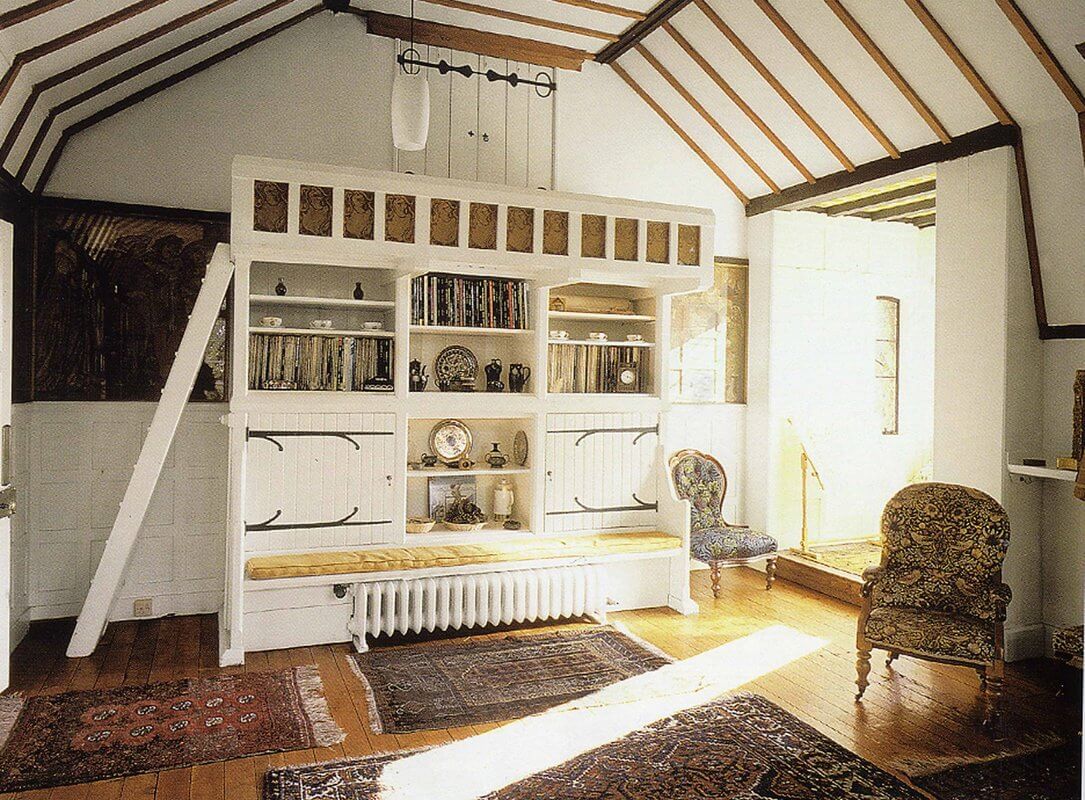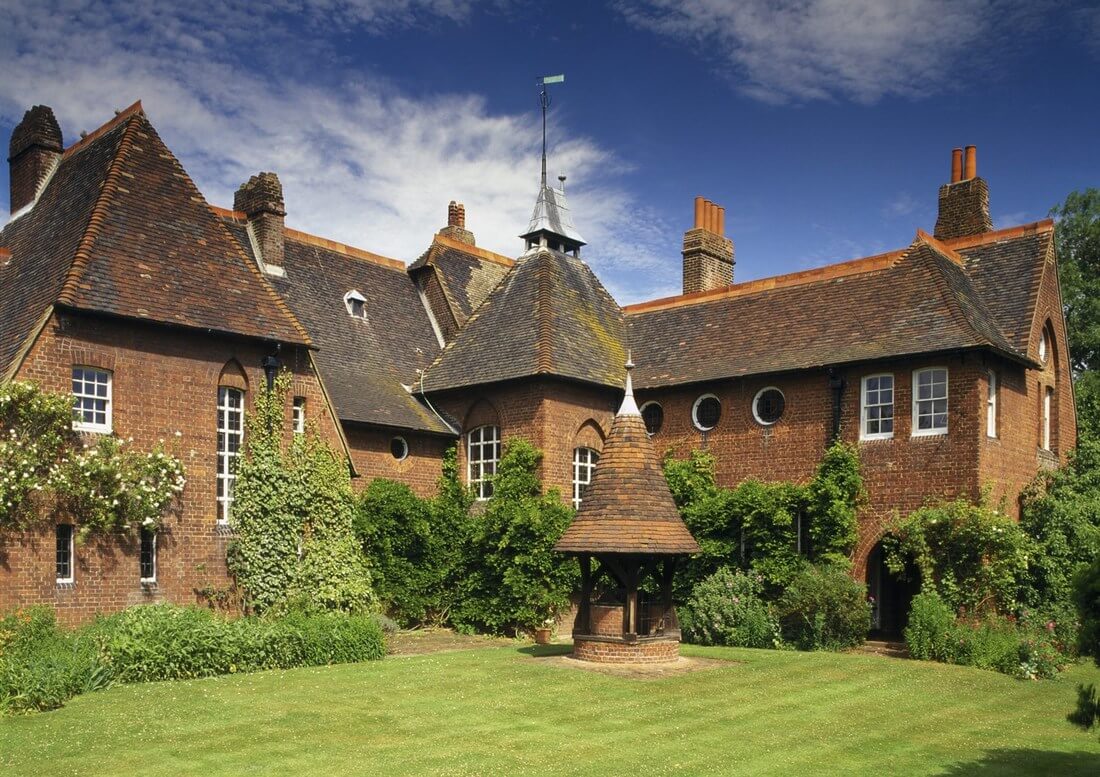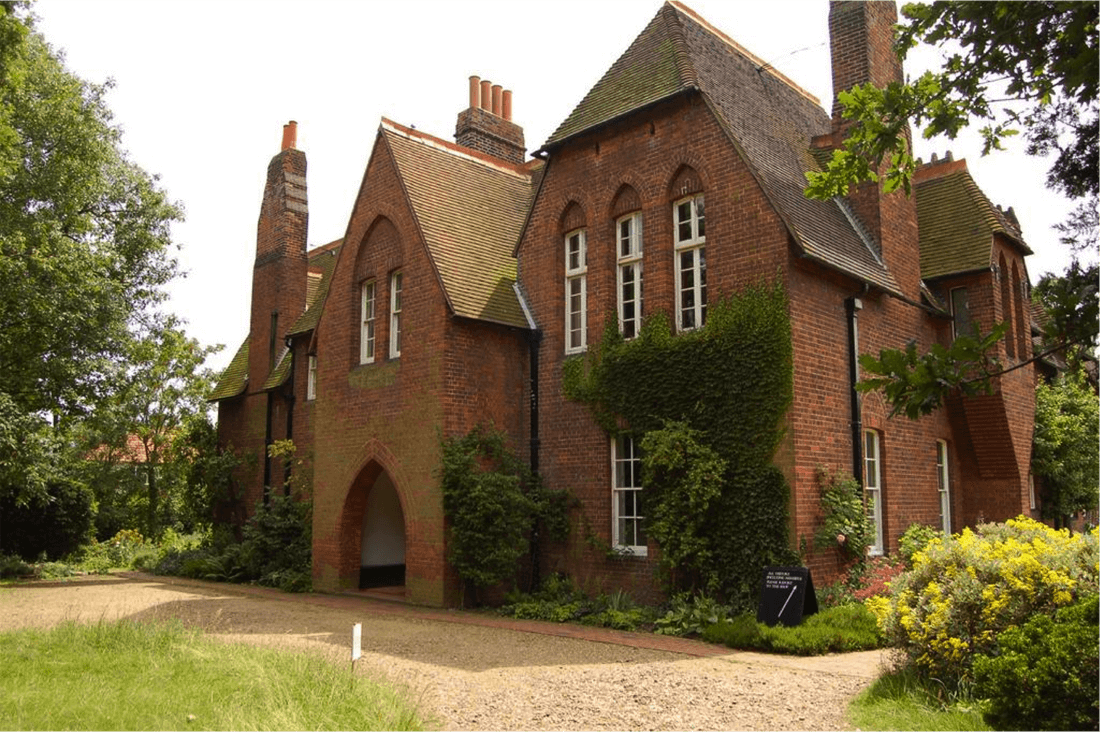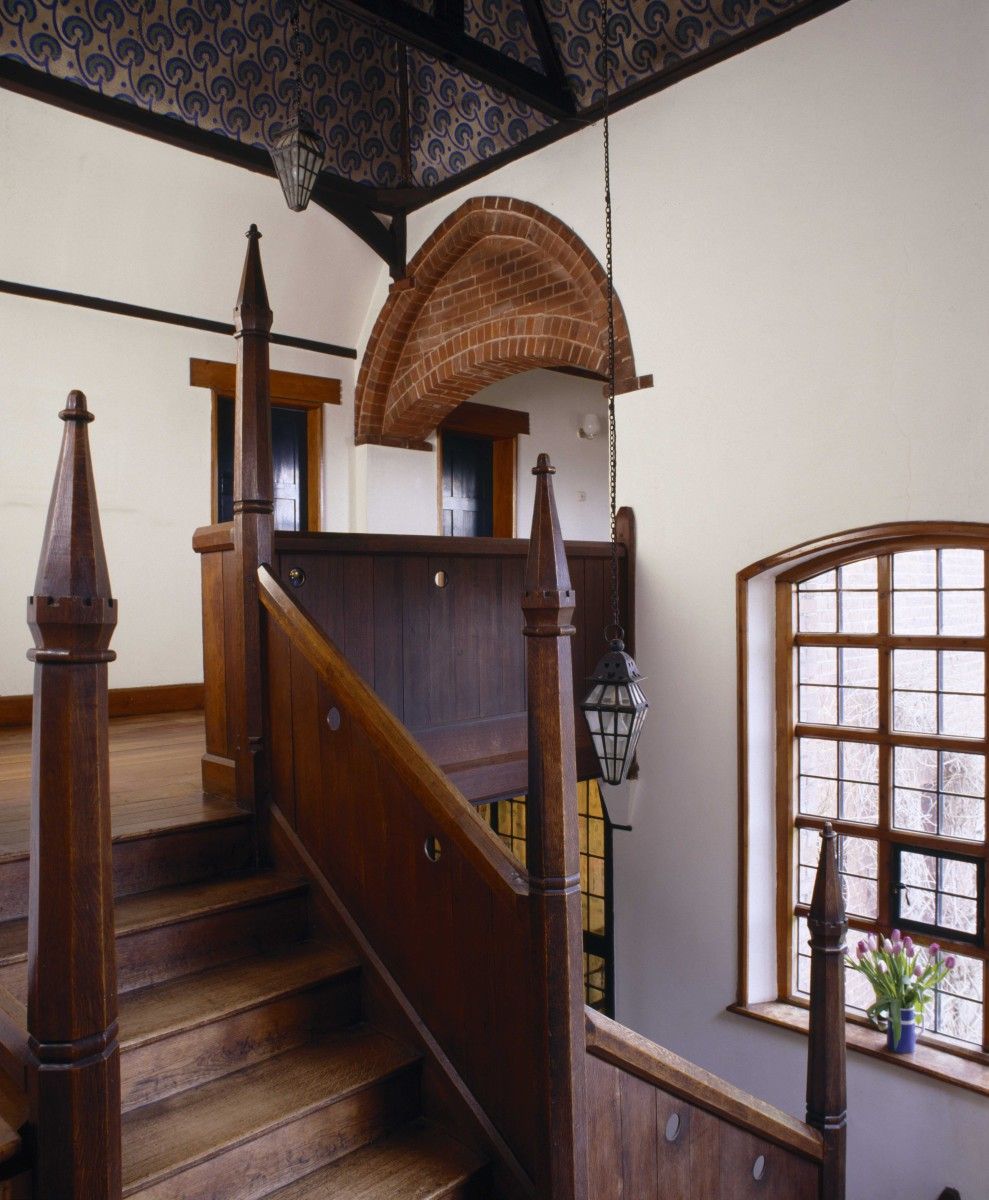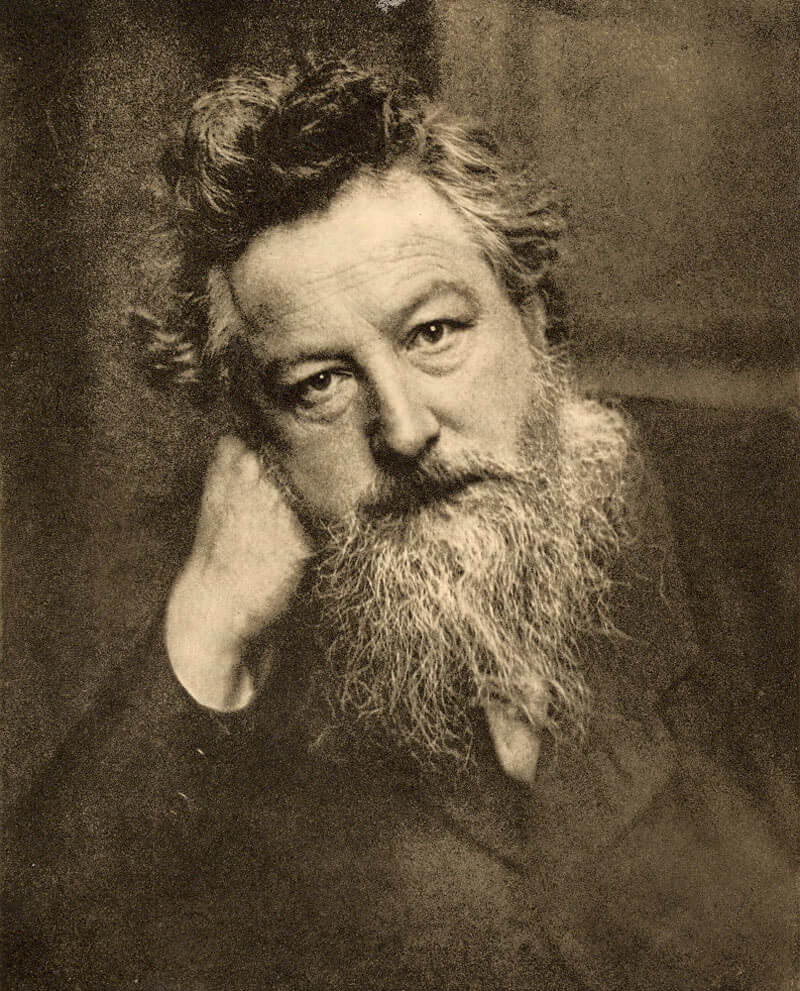Today we remember William Morris (1834-1896) who was born 184 years ago and had changed the face of design. In his landmark book Pioneers of Modern Design of 1936, Nokolaus Pevsner had already recognized Morris as the father of modern design, and a lot has been written about it since. ‘Simplicity of life,’ he said when trying to educate Victorians for better taste, ‘even the barest, is not a misery, but the very foundation of refinement.’ He called them to clean their homes, suggesting to ‘have nothing in your house that you do not know to be useful, or believe to be beautiful.’ Living in art homes, Morris advocated, was the only way to formulate happy family life. To substantiate all of these radical principles, he moved to the countryside, and built his Red House in Bexleyheath, Southeast London in 1959 (operated by the National Trust since 2003). It was the medieval barns and the genuine lifestyle in the 14th century, which he sought to revive in order to live a pure, down-to-earth lifestyle away from the evil of the Industrial Revolution. In his political enterprise, Morris was in a constant search for a way to end the class division and co-founded the Socialist League. I first visited the Red House in 1996, when it was belonged to the architect Edward Hollamby who had lived there since 1952, and not only restored the House, but also initiated preservation, founding the Friends of Red House. Morris was not only the father of the Arts and Crafts Movement, but also of modern design though he did not live to witness the success of his efforts. Visiting in the Red House is a mandatory pilgrimage for anyone interested in modern design and architecture.

